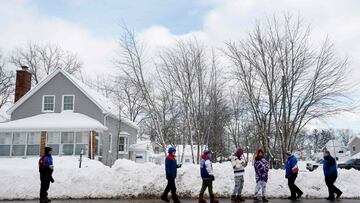What is wind chill? Meaning and how wind chill temperature is calculated
Brr, as if the cold temperates across the US weren’t enough, the wind chill is bringing them down even further. What is windchill and how is it calculated?


Temperates are dropping across the US, and the windchill in these areas makes it feel much colder than the thermometer will measure.
According to the National Oceanic and Atmospheric Administration (NOAA), windchill measures the “effect of the cold wind on people and animals,” looking at “the rate of heat loss from exposed skin caused by wind and cold.”
“As the wind increases, it removes heat from the body, driving down skin temperature and eventually the internal body temperature,” reports NOAA. This video from Idaho News provides a helpful description as well.
How is windchill calculated?
The example provided by the agency shows that if a thermometer is reading 0°F (-18°C), and wind in the area “is blowing at 15 mph (13 kt / 24 km/h),” it will feel like it is -19°F (-28°C) outside. Measuring the windchill is critical to keeping people and animals safe during periods of extreme cold. To help out, NOAA provides a chart that allows viewers to figure out the windchill in their area by identifying the intersection between wind (mph) and temperature (°F).
At -19°F, the risk of frostbite is extreme and could occur in just a few minutes.
This might interest you: What is the coldest wind chill ever recorded? Mount Washington hits all-time low
Here are a few things you can do to stay warm
The threat of cold temperatures cannot be overstated. Given that major storms can lead to power outages, it is advised that residents of towns and cities know where to go or how to contact the authorities if their electricity fails. Getting to a warming center or alerting the authorities so you can be transported to one can be the difference between life and death when temperatures drop and winter weather follows.
Related stories
Aside from staying inside with the heater on, people can take a few steps to stay warm as temperatures fall. The first is to layer up, which creates a larger buffer between your body and the cold and is extremely important if you are heading outside. People tend to lose a lot of heat from their heads, so throwing a hat on can help your body retain heat.
Additionally, eating warm foods and drinking warm beverages throughout the day can help keep your body temperature up. NOAA also advises those who live alone to have someone, be it a family member or neighbor, check in on them during major storms.

